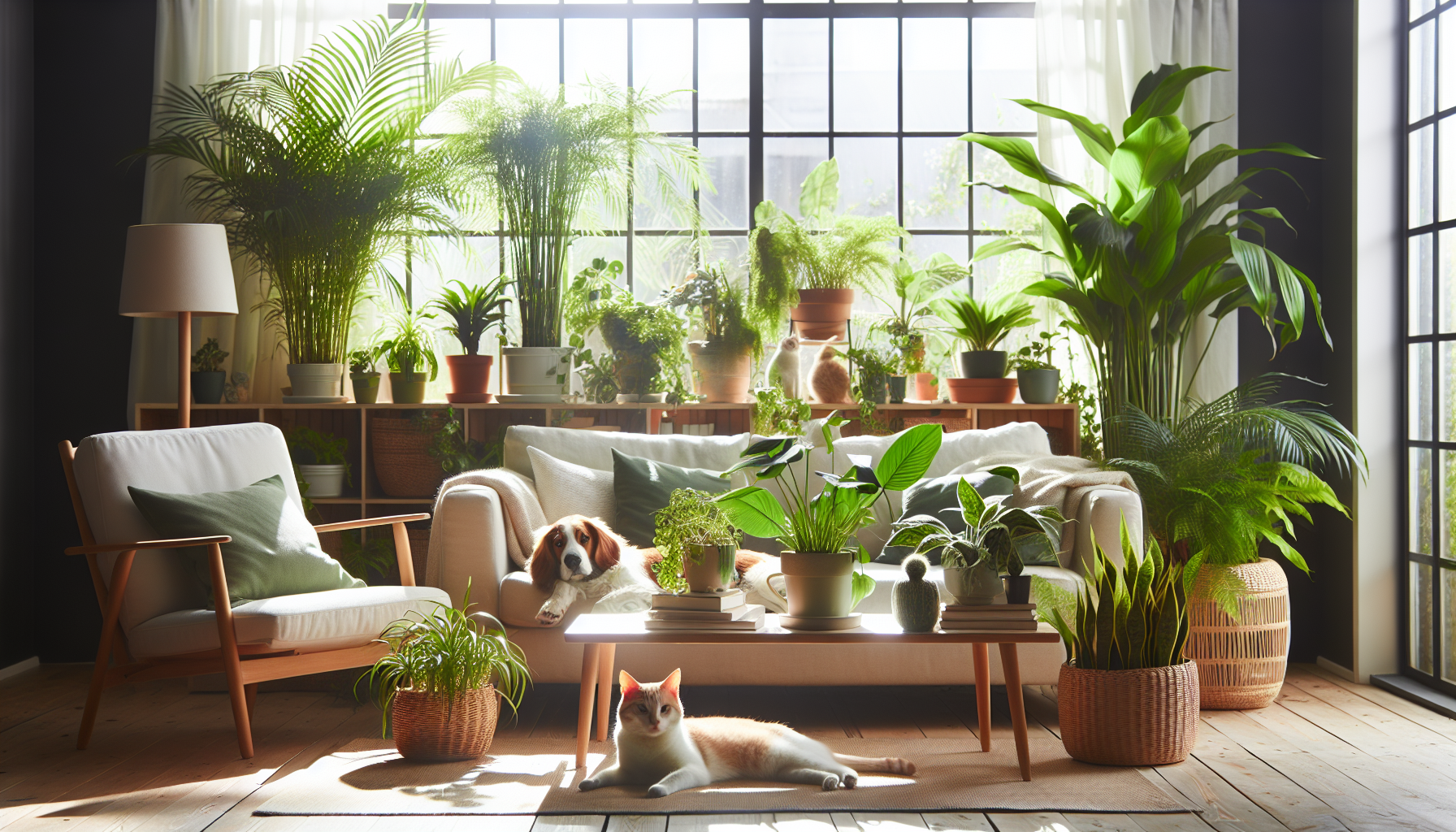- Empty cart.
- Continue Shopping
Indoor Plants for Clean Air: Pet Safety Considerations – toxic plants

Indoor Plants for Clean Air: Pet Safety Considerations
Indoor plants are not only a great way to beautify your home, but they also serve a functional purpose by purifying the air. However, if you are a pet owner, it’s crucial to consider the safety of these plants. In many cases, plants that are excellent for improving indoor air quality may be toxic to your beloved cats and dogs. Let’s explore some indoor plants that can be hazardous for pets, along with safer alternatives that still offer air-purifying benefits.
The Importance of Air-Purifying Plants
The air quality in our homes is more important than ever, especially considering the amount of time we spend indoors. Plants have the natural ability to remove toxins such as formaldehyde, benzene, and trichloroethylene from the air, making them a popular choice for households looking to improve their environmental health. However, while these plants help humans breathe easier, they can pose a danger to curious pets.
Common Toxic Indoor Plants for Pets
While many plants boast air-purifying properties, some can be toxic to pets. Here are eight common indoor plants that you should be cautious about if you have cats or dogs:
- Peace Lily (Spathiphyllum): Known for its striking white blooms, the Peace Lily can cause oral irritation, vomiting, and difficulty swallowing in cats and dogs.
- Snake Plant (Sansevieria): A popular choice for beginners, the Snake Plant might lead to nausea, vomiting, and diarrhea in pets.
- Philodendron: With its variety of shapes and sizes, Philodendron can cause swelling and discomfort in a pet’s mouth and throat.
- Aloe Vera: While beneficial for human health, Aloe Vera can induce vomiting and diarrhea in dogs and cats if ingested.
- ZZ Plant (Zamioculcas zamiifolia): The ZZ Plant is known for its drought resistance, but it can also cause vomiting and diarrhea in pets.
- English Ivy (Hedera helix): This climbing vine may lead to abdominal pain, excess drooling, and vomiting in pets.
- Dieffenbachia: Sometimes called Dumb Cane, this plant can lead to intense oral irritation and difficulty breathing when pets chew on its leaves.
- Jade Plant (Crassula ovata): A common succulent, Jade Plant can cause vomiting, lethargy, and incoordination in pets.
Pet-Friendly Plant Alternatives
Fortunately, there are many pet-safe plants that still offer air-filtering properties. Consider these alternatives that can help maintain both your interior air quality and your pets’ health:
- Bamboo Palm (Chamaedorea seifrizii): Safe for pets and effective at air purification, the Bamboo Palm is an excellent choice for those with furry friends.
- Areca Palm (Dypsis lutescens): Another pet-safe palm, the Areca Palm is known for its elegant fronds and its ability to remove indoor pollutants.
- Spider Plant (Chlorophytum comosum): This resilient plant is safe for pets and can effectively cleanse the air, even thriving in low-light conditions.
- Boston Fern (Nephrolepis exaltata): A lush, green addition to your home, the Boston Fern is non-toxic to pets and superb at removing toxins.
- Parlor Palm (Chamaedorea elegans): Perfect for table tops and offices, this palm cleans air effectively without posing risks to pets.
Plant Placement and Pet Monitoring
Even with pet-friendly plants, it’s important to exercise caution. Here are some tips for keeping your pets safe while enjoying an indoor jungle:
Strategic Plant Placement
- Hang plants or place them on higher shelves out of reach of your pets.
- Use barriers such as decorative lattices or chic plant stands to deter pet access.
- Consider using plant hangers or wall planters to expand your green space vertically.
Monitoring and Deterrents
- Keep an eye on your pets’ behavior around plants and relocate any that seem to attract too much attention.
- Utilize deterrents such as bitter sprays on the plants or aluminum foil around their bases to discourage chewing.
- Introduce novel toys and activities to reduce your pets’ curiosity towards the plants.
Conclusion
Indoor plants add beauty and cleanse the air in our homes, but it’s essential to choose options that are safe for our pets. Understanding which plants are toxic can help you make informed decisions, ensuring that both your living environment and your pets are healthy and happy. By opting for pet-safe plants and strategically arranging your greenery, you can enjoy a harmonious home that benefits both its human and animal inhabitants.
When in doubt, always consult with your veterinarian or botanist for advice regarding specific plants and their effects on your pets. Happy planting!
Unleash Incredible Savings on Pet Accessories Now!
Watch funny and cute dog videos!
Disclaimer: All images featured on this website are either sourced from free-to-use platforms, created by us, or used with permission. If you believe an image on this site violates copyright or your rights, please contact us, and we will address the issue promptly.

















